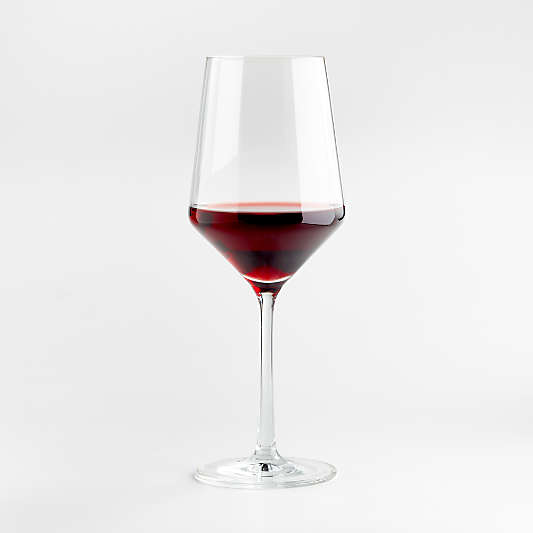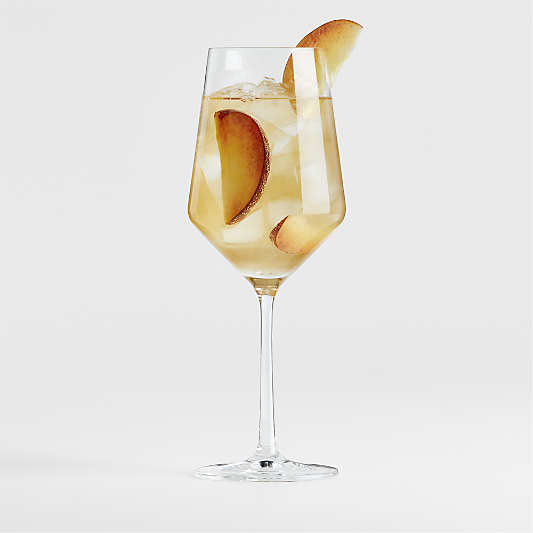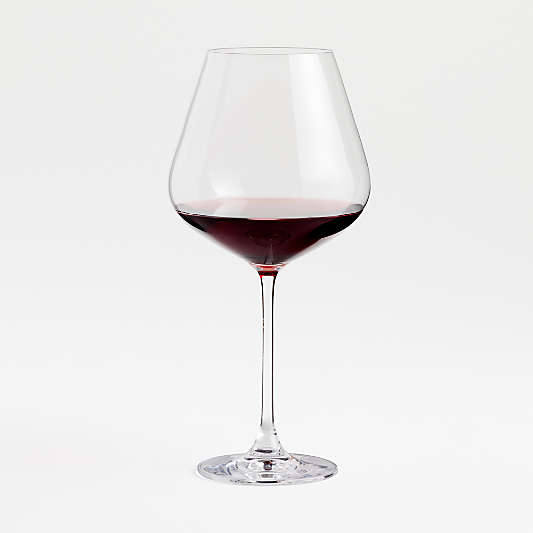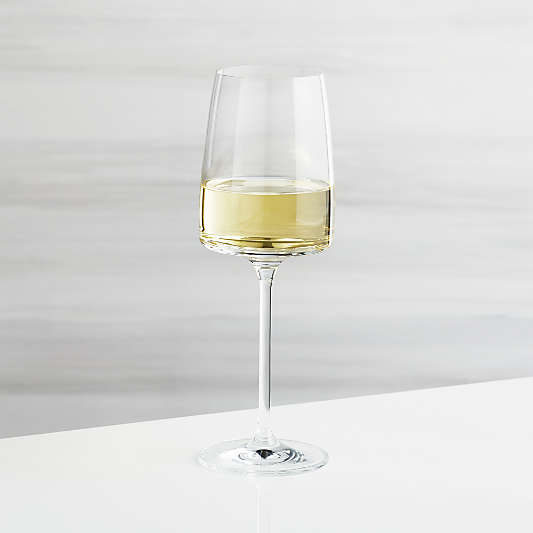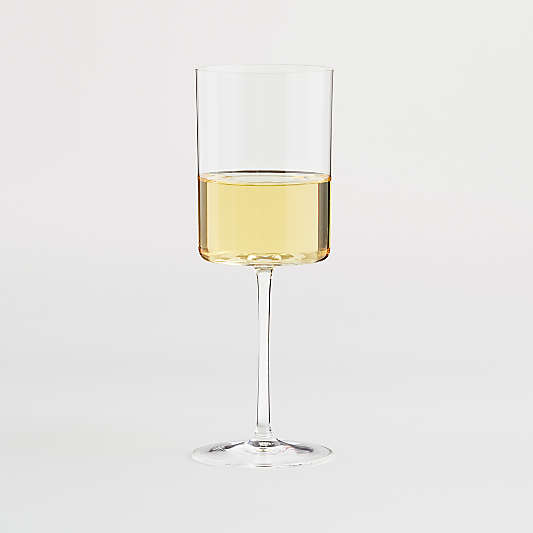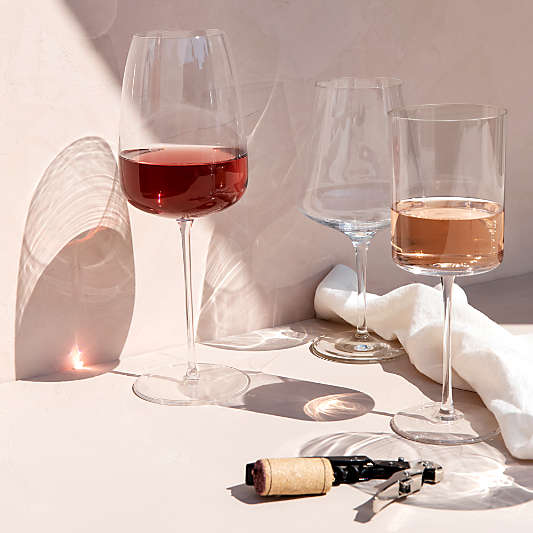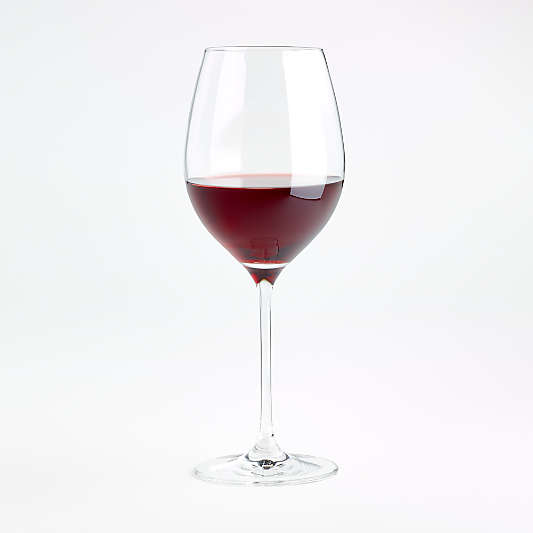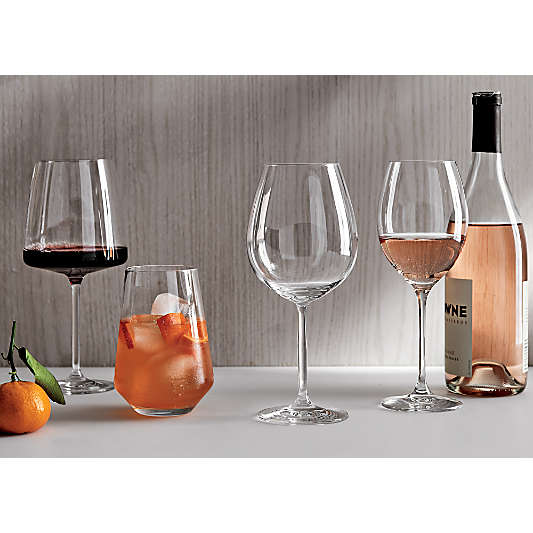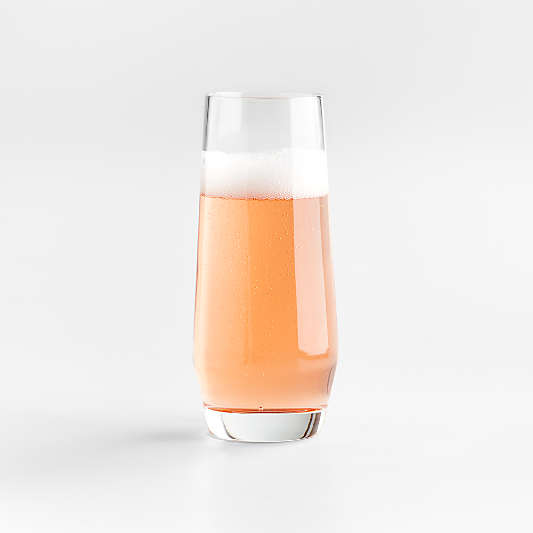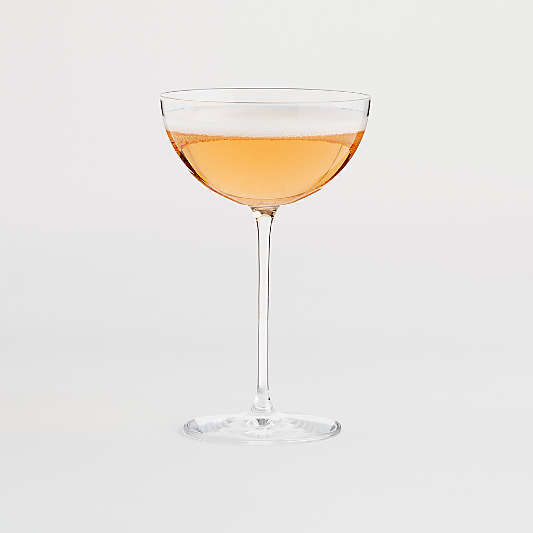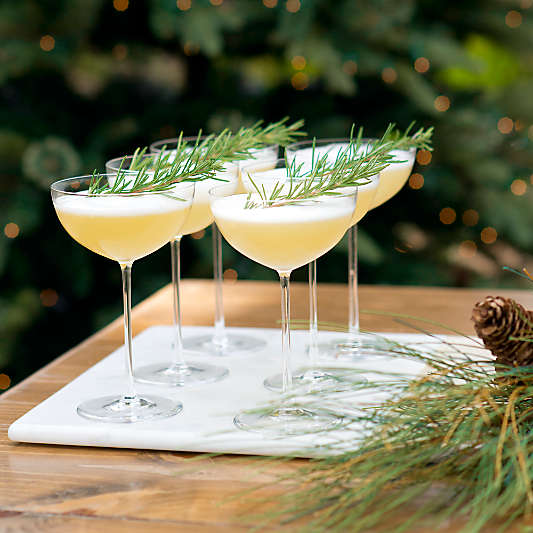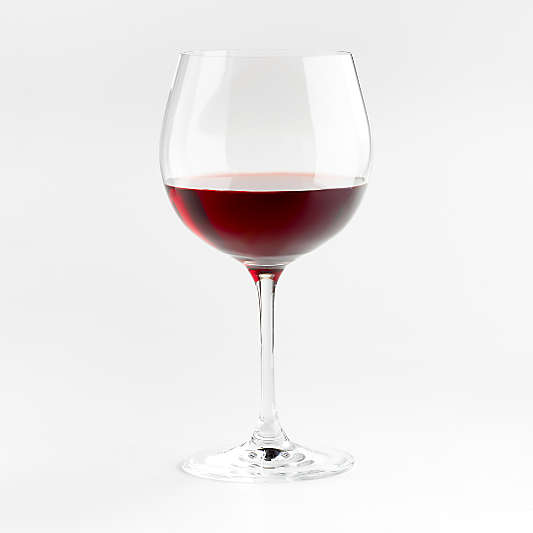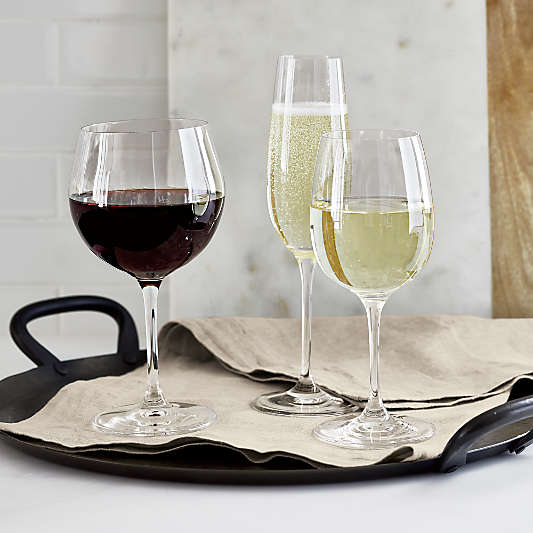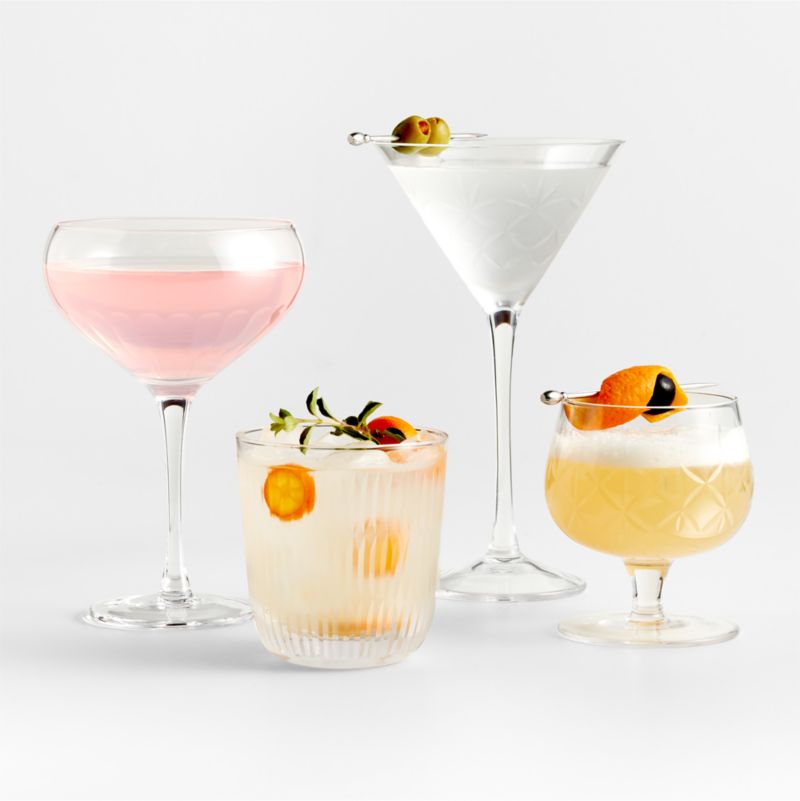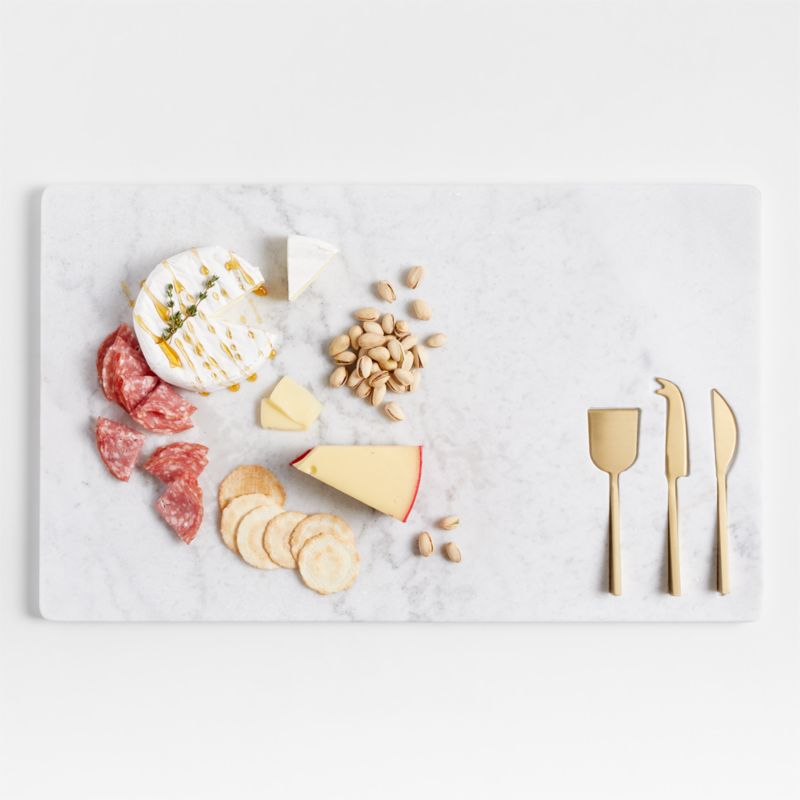- Shipping to
Something catch your eye?
Save it to Favorites
Create a Mood Board
See it all together
 View Favorites
View FavoritesAre you missing items in your cart?
to see items you may have added using another computer or device.
View Cart14 Types of Wine Glasses Guide
types of wine glasses: a complete guide
Full-bodied reds to crisp, fruity whites—with the vast amount of wines come many different types of
wine glasses. Whether you’re a seasoned sommelier or a casual sipper, the right glass will enhance your
tasting experience. Need help determining the best wine glass for your favorite varietal? Keep scrolling
to read our comprehensive wine glass guide and discover the most important factors
to consider when making your decision.

types of wine glasses
Each wine glass shape is designed to enhance different varietals. When stocking your glassware collection, keep in mind the wines you enjoy most. If you prefer the rich flavor of reds, consider investing in a few different types of red wine glasses to maximize your tasting experience. Use the wine glass guide below to learn about the many distinct wine glass types and which glasses go with which varietals.

types of red wine glasses
Cabernet Glasses
Often used as a universal red wine glass, cabernet glasses have a large bowl and tall stem. A larger bowl gives the wine more surface area, allowing it to oxidize or breathe. Oxidizing softens the tannins found in reds, improving the overall flavor and releasing the wine's natural aromas. This is essential because aromas are a large part of what you taste when drinking wine. The shape directs the wine to the center of the palate which helps mitigate the effects of tannins— compounds that produce a mouth-drying feel. To allow a wine to open before pouring it in a glass, consider using a wine decanter.
Burgundy glasses
With its prominent fish bowl shape, burgundy glasses trap the aromas of full-bodied wine. It also balances the wine's intensity. Since the wine comes from thin-skinned grapes, it does not need to be swirled quite as much to enjoy the aromas. The narrow rim mitigates acidity by targeting the wine to the center of the palate.
Bordeaux Glasses
In contrast with Burgundy glasses, Bordeaux glasses are taller, allowing you to maximize the surface area of wine exposed to air as you swirl the liquid up the edge of the glass. Produced from thicker-skinned grapes, Bordeaux wine is best when it's swirled and allowed to breathe. The shape also helps reduce the effects of tannins by concentrating the wine to the back of the tongue.
Zinfandel glasses
To let the fruit and spice flavors in the wine shine, zinfandel glasses direct the wine to your palate through a smaller opening. Its smaller bowl tempers the taste and smell of ethanol present in zinfandel varieties with a medium-to-high alcohol content. Because some zinfandels have more tannins, the narrow opening helps to balance out any potential mouth-drying effects.
Pinot Noir Glasses
The large bowl of pinot noir glasses release the wine's subtle and delicate aromas by allowing a large surface area of wine to be exposed to oxygen. This distinct shape also helps trap aromas in the glass. Pinot noir glasses target the wine to the front of the mouth which accentuates sweet flavors while regulating acidic ones.
types of white wine glasses
Sauvignon Blanc Glasses
Sauvignon blanc, pinot grigio, riesling and other white wines are best consumed in a glass with a narrow bowl. While their red counterparts are enhanced by oxidation, too much air can compromise the bright flavor characteristics of a white wine. The narrow bowl of white wine glasses combined with a narrow opening also helps keep white wine chilled. The wine is focused on the center of the tongue to highlight light flavors while reducing any acidic notes.
Chardonnay Glasses
The large bowl of a chardonnay glass balances out oaky notes. Furthermore, the greater surface area exposed to air lets the wine open up to reveal other tastes. The wide aperture evenly spreads the wine across the palate, bringing complex layers of flavor into focus.


types of sparkling wine & champagne glasses
champagne flutes
Bubbles are essential to a good glass of sparkling wine. To maintain the fizzy effect, bubbly wines such as champagne, prosecco and cava are best consumed in a glass with a narrow bowl and smaller mouth, such as a champagne flute. The glass shape preserves the bubbles by limiting oxidation, while also keeping the sparkling wine cool. To keep it chilled for an extended period of time, consider using a wine bucket.
tulip glass
Like the elongated bud of their namesake flower, tulip glasses are slim at the base with a wider bowl that narrows just before the opening. Its distinct shape is designed to limit carbonation from escaping, guiding the aromas in the wine to the tongue instead of the nose. This creates an optimal drinking experience.
coupe glasses
Defined by its broad, shallow bowl and long stem, coupe glasses (or champagne coupes) serve double duty with other libations like martinis or manhattans. These glasses are designed to open up the flavor of champagne for full-bodied taste and fewer bubbles.
types of dessert wine glasses
port glasses
Port glasses, also known as dessert wine glasses, are recognizable for their tiny size. Because port has a much higher alcohol content—usually 20% ABV—a smaller pour is served. Additionally, the diminutive stature of the glass allows the body heat from your hand to release aromatics that are preserved in the round bowl for nuanced savoring.
sherry glasses
The smaller the glass, the better. Traditionally this delicious after-dinner drink is served in what looks like a miniature white wine glass. Its small bowl and narrow mouth help trap the complex aromas of sherry and its long stem prevents warm hands from raising its temperature.


types of rosé glasses
Young rosÉ glasses
Rosé wine that has not fully matured is best served in a glass with a flared lip. The lip draws out the wine’s crisp flavor, directing it to the tip of the tongue and focusing on the most sensitive taste buds.
Mature rosÉ glasses
More mature rosé should be served in a slightly tapered glass with a short, rounded bowl and preferably long stem. This helps push the aroma to the top of the glass, allowing you to savor its full flavor.

parts of a wine glass
After learning about wine glasses by varietal, it’s important to understand the different parts of a wine glass and the unique purposes they serve. Wine glasses are designed top to bottom to elevate the drinking experience, giving each wine variety its own distinct shape.
Foot
The foot of the wine glass (or base) keeps it balanced. Stemless wine glasses do not have a distinct base. Instead, it rests on the bottom of the bowl. Some modern wine glasses have an elongated sham–a thick layer of glass beneath the bowl of the cup–rather than a slender stem and flared foot. While shams are a common feature of highball and double old-fashioned glasses, they give wine glasses a sturdy foundation and a more sculptural silhouette.
Stem
The stem is the slender piece of glass that acts as a bridge between the bowl and the base. For optimal taste, long stem wine glasses should be held as close to the base as possible—avoid cupping the bowl. This keeps your body heat away from the bowl, allowing you to drink it at the perfect temperature. Holding a glass by the stem also puts distance between your hand and your nose as your sip. Did you know that scents heavily influence taste? By gripping a glass near the rim, you could pick up other scents like lotion or perfume, interfering with your ability to take in the wine’s true flavor and aroma.
Bowl
The shape and size of the bowl affects how aromas are released and collected. To get a proper swirl, pour wine to roughly one third of the bowl's height. Then, swirl the wine to release its aromas, drawing the nose to the glass just after swirling and before sipping. For bold reds it's best to look for a large glass that can aerate and oxidize the wine, letting the complex flavors breathe. The greater the surface area that's exposed to air, the more undesirable compounds (like ethanol and sulfites), evaporate, letting the good scents and flavors shine. Wondering why some wine glasses are narrow? For white wines, you want to preserve their naturally crisp flavor, so preventing oxidation is ideal. Champagne flutes—the narrowest wine glasses—are slender to maintain bubbles.
Rim
The size and shape of the rim directs the wine to the ideal area of the palate. Narrow apertures allow wine to flow to a specific part of the tongue, highlighting or reducing specific notes. For instance, a small opening can enhance sweet flavors while balancing out the acidity. Additionally, narrow rims keep aromas inside the glass and direct your nose in, keeping your sense of smell engaged. For wines with more complexity and less acidity or fewer tannins, a broad opening is often used to spread the libation across your palate. Regardless of shape, thinner rims allow for the best tasting experience since the wine transitions seamlessly from the glass to your palate.


expert answers to your wine glass questions
What is the difference between red and white wine glasses?
The biggest difference between red and white wine glasses is size. White wine glasses tend to be smaller than red wine glasses. The smaller bowl combined with a narrow opening keeps white wine chilled and focuses flavors on the center of the tongue, reducing any acidic notes. Alternatively, a larger bowl gives red wine more surface area, allowing it to oxidize or breathe. Oxidizing softens the tannins found in reds, improving the overall flavor and releasing the wine's natural aromas.
How many wine glasses should I have?
A general rule of thumb is to buy two sets of six glasses—one for reds and the other for whites. Think about how many people you typically serve when hosting and get two more glasses on hand in case of accidents. For more advice, refer to our wedding registry checklist.
What is the right way to hold a wine glass?
For optimal taste, hold a wine glass by the stem as close to the base as possible, avoiding cupping the bowl. This keeps your body heat away from the bowl, allowing you to drink it at the perfect temperature. Holding a glass by the stem also puts distance between your hand and your nose as your sip. Did you know that scents heavily influence taste? By gripping a glass near the rim, you could pick up other scents like lotion or perfume, interfering with your ability to take in the wines true flavor and aroma. Unlike stemmed wine glasses, stemless wine glasses do not have a distinct base or stem, instead it rests on the bottom of the bowl.
Can you put wine glasses in the dishwasher?
If you’re looking for dishwasher-safe wine glasses, go for something made from acyclic. Durable and affordable, acrylic wine glasses make it easy to accommodate large crowds when hosting casual events. The strong material can withstand drops or clinks, making for worry-free alfresco entertaining.
What is the best all-purpose wine glass?
The best all-purpose wine glass is one in between the size and shape of a white wine and red wine glass. You’ll want to look for a glass with a medium-sized bowl, thin lip on the rim and a lightweight feel. For everyday stemware beautifully crafted top to bottom, try our Aspen all-purpose wine glass.
What does a wine decanter do?
To allow a wine to open up slowly, consider using a decanter or wine carafe. Some wine varieties take as little as 30 minutes to breathe properly, while others benefit from two to three hours. Another benefit? Decanting collects the sediment found at the bottom of the bottle. This is ideal if your bottle was stored horizontally in a wine rack or cellar. For tips and tricks on getting it right, consult our guide to learn how to decant wine.
- bestsellerSale CAD 18.35 reg. CAD 22.95Black Friday SaleFree Ship Over CAD 149Get It Personalized
- top giftSale CAD 12.75 reg. CAD 15.95Black Friday SaleFree Ship Over CAD 149
- Sale CAD 18.35 reg. CAD 22.95Black Friday SaleFree Ship Over CAD 149Get It Personalized
- bestsellerSale CAD 17.55 reg. CAD 21.95Black Friday SaleFree Ship Over CAD 149Get It Personalized
- bestsellerSale CAD 11.95 reg. CAD 14.95Black Friday SaleFree Ship Over CAD 149Get It Personalized
- bestsellerSale CAD 15.95 reg. CAD 19.95Black Friday SaleFree Ship Over CAD 149Get It Personalized
